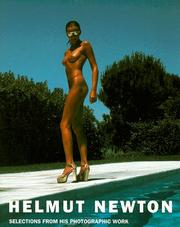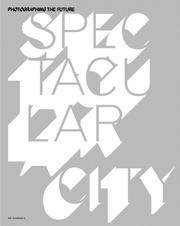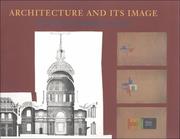| Listing 1 - 8 of 8 |
Sort by
|

ISBN: 3888146364 9783888146367 Year: 1994 Publisher: Munich : Schirmer Art Books,
Abstract | Keywords | Export | Availability | Bookmark
 Loading...
Loading...Choose an application
- Reference Manager
- EndNote
- RefWorks (Direct export to RefWorks)
Gursky, Andreas --- Photographe --- Photographie d'art --- Photography, Artistic --- Architectural photography --- Exhibitions --- Gursky, Andreas, --- 20e siècle --- Landscape photography --- Exhibitions. --- Photography, Artistic - Exhibitions --- Architectural photography - Exhibitions --- Gursky, Andreas, - 1955- - Exhibitions --- Gursky, Andreas, - 1955 --- -Gursky, Andreas
Book
ISBN: 9783775744683 3775744681 Year: 2018 Publisher: Berlin : Hatje Cantz,
Abstract | Keywords | Export | Availability | Bookmark
 Loading...
Loading...Choose an application
- Reference Manager
- EndNote
- RefWorks (Direct export to RefWorks)
A century after the founding of the Bauhaus, probably the most popular and yet controversial art school in Weimar, its name has become a byword, as well as a myth. Entire generations have been confronted with, and socialized by, the factual, down-to-earth, and functional Bauhaus architecture. Trailblazers, allies, and heirs to modernism are united by an architectural language generally described as 'Bauhaus'. The Bauhaus legacy, which the photographer Jean Molitor has been tracking around the world since 2009, is presented here in this catalogue. Einhundert Jahre nach Gründung des Bauhauses, der wohl populärsten und gleichzeitig umstrittensten Kunstschule in Weimar, ist sein Name sowohl Schlagwort als auch Mythos. Ganze Generationen sind mit der sachlich-nüchternen und funktionalen Bauhaus-Architektur konfrontiert und sozialisiert worden. Wegbereiter, Wegbegleiter und Erben der Moderne vereint eine Architektursprache, die mit dem Begriff Bauhaus allgemein verständlich wird. Die Erben des Bauhauses, die der Fotograf Jean Molitor seit 2009 auf der ganzen Welt aufspürt, werden in dem hier vorliegenden Katalog gemeinsam präsentiert. In seinem Kunstprojekt bau1haus nimmt er die Ästhetik der Bauten in den Fokus: Er sieht sie als zentrales Element einer epochemachenden Bewegung in Architektur, Kunst und Design, die aus dem Jugendstil in die Moderne führt, und macht durch seine Bilder globale Verbindungen des Bauhauses deutlich.
Architecture, Modern --- Architecture --- Exhibitions. --- Expositions --- Molitor, Jean --- Bauhaus --- Photographie d'architecture --- Molitor, Johannes --- Molitor, Jean, --- Architectural photography --- Photographie --- Influence --- Architectural photography - Exhibitions --- Architecture, Modern - 20th century - Pictorial works - Exhibitions --- Molitor, Jean - Exhibitions
Book
ISBN: 293039109X 9782930391090 Year: 2001 Publisher: Brussel CIVAl
Abstract | Keywords | Export | Availability | Bookmark
 Loading...
Loading...Choose an application
- Reference Manager
- EndNote
- RefWorks (Direct export to RefWorks)
L'homme qui se regarde ainsi dans un miroir ne s'appelle pas encore Lucien Hervé mais Laszlo Elkan, né en 1910 en Hongrie. Cette image contient tout ce qui fera sa force et sa singularité : des contrastes très tranchés, tache noire qui se découpe sur des éclats de lumière. En 1949, Elkan est devenu Hervé et se révèle comme celui qui sait voir l'architecture : 650 clichés du site de l'Unité d'Habitation de Le Corbusier, pris en un seul jour, sont présentés à ce dernier et lui font dire "vous êtes l'âme de l'architecte ". Lucien Hervé est essentiellement connu par le grand public comme le photographe qui a le mieux révélé l'architecture de Le Corbusier, Marcel Breuer, Alvar Aalto et saisi les portraits entre autres de Fernand Léger ou Henri Matisse. Mais son travail va bien au-delà : il agit comme un révélateur de l'architecture, du paysage et des personnes qu'il photographie. Cinq thèmes qui dévoilent les aventures du regard. Lexposition propose une lecture de la production de Lucien Hervé à travers une sélection de 200 oeuvres souvent inédites et rythmées par différents thèmes au contenu surprenant. L'abstraction, née des formes architecturales et du regard du photographe, invite à voir les choses autrement. Les matières, leur assemblage et leur traitement, les graffitis et les affiches arrachées offrent des clichés qui dévoilent leur sensualité : ce que l'oeil de Lucien Hervé a rendu visible dans la banalité. Les villes nouvelles du passé et d'aujourd'hui, de Fatepuhr Sikri à Brasilia se révèlent parmi les oeuvres de l'artiste comme le signe d'une révolution permanente de l'esprit. La présence de l'homme dans le paysage construit ou naturel change le propos de la photographie d'architecture. Lucien Hervé intime : La relation personnelle et intime d'un photographe avec d'autres modes d'expression : littérature, sculpture, peinture...." Dans les photographies de Lucien Hervé l'ombre et la lumière forment des contrastes riches et parfois violents, des compositions où se retrouvent sans doute les traces proches ou lointaines des recherches du Bauhaus ou des constructivistes, en tous cas le goût de réinterprétation et de structuration du monde, de l'invention permanente " Pierre Puttemans.
761.2 fotografen afzonderlijk --- Hervé, Lucien --- architectuurfotografie --- modernisme --- Architectural photography. --- Photographie d'architecture --- Hervé, Lucien. --- Photographie-tableau --- Herve, Lucien --- Le Corbusier, Charles-Edouard Jeanneret, --- Hervé, Lucien --- Hervé, Lucien, --- Hervé, Lucien. --- Architecture --- Photographie artistique --- Photographies --- Architectural photography --- Photography, Artistic --- Elkán, László --- Photographies. --- Architectural photography - Exhibitions --- Photography, Artistic - Exhibitions --- Le Corbusier, Charles-Edouard Jeanneret, 1887-1965 --- Hervé, Lucien - Exhibitions --- artistieke fotografie
Book
ISBN: 9783038601142 3038601144 Year: 2018 Publisher: Zürich : Park Books,
Abstract | Keywords | Export | Availability | Bookmark
 Loading...
Loading...Choose an application
- Reference Manager
- EndNote
- RefWorks (Direct export to RefWorks)
240 cm is the standard distance between floor and ceiling in residential buildings: the height of the void we inhabit. In its precision, and its emptiness, the number reflects contemporary interior architecture's condition. In a series of essays, 'House Tour' explores an interior that is both familiar and seemingly uninhabited, critically celebrating a peculiar genre of representation, the architectural photography of an unfurnished interior. The authors - including anthropologists, architecture theorists and art historians - consider the ubiquitous contemporary apartment from an eye-level view, foregrounding the appearance and material presence of the architectural shell. They start out from photographs of unfurnished interiors found on the websites of leading Swiss architecture firms. They have a blank, labyrinthine appearance, with walls intersecting at oblique angles and exits seemingly leading nowhere, and show featureless rooms with seamless transitions between surfaces. Exhibition: Swiss Pavilion, 16th Architecture Biennale, Venice, Italy (26.05. - 24.11.2018).
Architecture intérieure --- Photographie d'architecture --- Architecture --- Interior architecture --- Architectural photography --- Architecture, Modern --- 728.037 --- 728.2 --- 72.02 --- Zwitserland --- Biennale di Venezia --- Architectural interiors --- Architecture, Interior --- Interior space (Architecture) --- Interiors --- Space (Architecture) --- 21ste eeuw (woningbouw) --- Appartementen (architectuur) --- Presentatietechnieken (architectuur) --- Exhibitions --- Architecture intérieure. --- Interior architecture - Exhibitions --- Architectural photography - Exhibitions --- Architecture, Modern - 21st century - Exhibitions --- Image de l'architecture --- Photographie --- Perception de l'espace --- Architecture intérieure

ISBN: 9056625187 9789056625184 Year: 2006 Publisher: Rotterdam NAI
Abstract | Keywords | Export | Availability | Bookmark
 Loading...
Loading...Choose an application
- Reference Manager
- EndNote
- RefWorks (Direct export to RefWorks)
Photography --- Architectural photography --- Architectural photography--Exhibitions. --- Architecture and photography--Exhibitions. --- Cities and towns --- Street photography --- Pictorial works --- [Aaron Betsky, Emiliano Gandolfi, Steven Jacobs et al.] --- fotografie --- architectuurfotografie --- stadsfotografie --- landschapsfotografie --- Barbieri Olivo --- Konrad Aglaia --- Couturier Stéphane --- Gefeller Andreas --- Specker Heidi --- Linke Armin --- Cleijne Edgar --- Sze Tsung Leong --- Struth Thomas --- Müller Karin Apollonia --- Goiris Geert --- Boberg Oliver --- Princen Bas --- Holdsworth Dan --- Gursky Andreas --- Castella Vincenzo --- Jodice Francesco --- Burkhard Balthasar --- Hatakeyama Naoya --- Wesely Michael --- van der Salm Frank --- Matsue Taiji --- Ruff Thomas --- Spinatsch Jules --- Hido Todd --- Demand Thomas --- Lamers Ine --- Zwakman Edwin --- Lambri Luisa --- 77.046 --- 77.039 --- Global cities --- Municipalities --- Towns --- Urban areas --- Urban systems --- Human settlements --- Sociology, Urban

ISBN: 0262022893 9780262022897 Year: 1989 Publisher: Montréal : CCA,
Abstract | Keywords | Export | Availability | Bookmark
 Loading...
Loading...Choose an application
- Reference Manager
- EndNote
- RefWorks (Direct export to RefWorks)
Architectural drawing --- Architectural photography --- Architecture in art --- Dessin d'architecture --- Photographie d'architecture --- Architecture dans l'art --- Exhibitions. --- Expositions --- Centre canadien d'architecture --- Architecture --- Bibliography --- -Architectural photography --- -Architecture --- -72.02 --- 72.02 --- 77.046 --- Architecture, Western (Western countries) --- Building design --- Buildings --- Construction --- Western architecture (Western countries) --- Art --- Building --- Photography, Architectural --- Photography of architecture --- Photography of buildings --- Photography --- Drawing, Architectural --- Plans --- Architectural design --- Communication in architectural design --- Drawing --- Mechanical drawing --- Exhibitions --- -Exhibitions --- Architectuurtekeningen --- Presentatietechnieken (architectuur) --- Architectuurfotografie --- Design and construction --- -Canadian Centre for Architecture --- CCA --- Canadian Center for Architecture --- Centro canadese di architettura --- Bibliography&delete& --- Canadian Centre for Architecture --- Centre canadien d'architecture. --- Architecture, Primitive --- Architectural drawing - Exhibitions. --- Architectural photography - Exhibitions. --- Architecture - Bibliography - Exhibitions.
Book
ISBN: 9783775746557 3775746552 Year: 2019 Publisher: Berlin : Hatje Cantz,
Abstract | Keywords | Export | Availability | Bookmark
 Loading...
Loading...Choose an application
- Reference Manager
- EndNote
- RefWorks (Direct export to RefWorks)
Phylum H' describes a very special architectural task: constructing a hospital. Brunet Saunier Architecture is dedicated to this type of research and further development. Their process is based on intensive research on the functional procedures required in medicine, social demands, and aesthetic possibilities. With these complex ideas, their plans become fascinating time capsules. On one hand, the analytical gaze looks to the past, searching for the medical, historical, and typological elements of the function of hospitals. On the other, potential new technologies, and practices for life and treatment are also examined. In the present, this results in unique buildings distinguished by a sophisticated mastery of flexible spatial structure and integrative design. They create a place for technology, knowledge, work, and social life--for both today and tomorrow. This publication discusses this unique creative process, using sketches, interviews, 3D models, blueprints, and photographs. BRUNET SAUNIER ARCHITECTURE was founded in 1981 by the architects Jérôme Brunet and Eric Saunier. The firm is primarily devoted to erecting public buildings. The successful interaction of formal and functional aspects of their hospital buildings made the architectural office famous across Europe.
Hospital architecture --- Hospital buildings --- Architecture, Modern --- Architecture --- Architectural photography --- Hospital Design and Construction --- Architecture hospitalière --- Hôpitaux (Édifices) --- Photographie d'architecture --- History --- Histoire --- Brunet Saunier architecture (Firm) --- Brunet Saunier architecture (Firme) --- Designs and plans --- Dessins et plans --- Hospital architecture - Europe - History - 21st century - Exhibitions --- Hospital buildings - Europe - History - 21st century - Exhibitions --- Architecture, Modern - 21st century - Exhibitions --- Architecture - Europe - History - 21st century - Exhibitions --- Architectural photography - Exhibitions --- Architecture hospitalière - Europe - Histoire - 21e siècle - Expositions --- Hôpitaux (Édifices) - Europe - Histoire - 21e siècle - Expositions --- Architecture - 21e siècle - Expositions --- Architecture - Europe - Histoire - 21e siècle - Expositions --- Photographie d'architecture - Expositions
Book
ISBN: 9782757200933 2757200933 Year: 2007 Publisher: Le Havre : Paris : Musée Malraux ; Somogy,
Abstract | Keywords | Export | Availability | Bookmark
 Loading...
Loading...Choose an application
- Reference Manager
- EndNote
- RefWorks (Direct export to RefWorks)
Brasilia, Chandigarh, Le Havre... Ces trois grandes villes du XXe siècle, construites par trois architectes majeurs, Oscar Niemeyer, Le Corbusier et Auguste Perret, sur trois continents différents, ont en commun d'avoir été de grands chantiers mettant en oeuvre les convictions de leurs concepteurs. Réalisations majeures de l'histoire mondiale de l'architecture et de l'urbanisme, elles ont également en commun d'avoir été photographiées entre 1955 et 1961 par l'un des meilleurs "interprètes" de l'architecture qui soient : Lucien Hervé. Le dialogue entre son oeuvre et celles, plus récentes, d'artistes contemporains (Louidgi Beltrame, Emmanuelle Blanc, Jordi Colomer, Stéphane Couturier, George Dupin, Véronique Ellena, Diwan Manna, Arthur Monteiro, Emmanuel Pinard, Caio Reisewitz et Nancy Wilson-Pajic), invite à la (redécouverte de ces photographies devenues mythiques et ayant largement contribué à faire connaître en Europe la physionomie des nouvelles capitales du Brésil et du Penjab occidental et en France, celle du Havre. http://www.eyrolles.com/BTP/Livre/9782757200933/livre-brasilia-chandigarh-le-havre.php
Architectural photography --- Photography, Artistic --- Photographie d'architecture --- Photographie artistique --- Exhibitions. --- Expositions --- Brasília (Brazil) --- Chandigarh (India) --- Le Havre (France) --- Brasilia (Brésil) --- Chandigarh (Inde) --- Pictorial works --- Exhibitions --- Ouvrages illustrés --- Histoire de l'architecture --- Histoire de l'urbanisme --- Mouvement moderne --- Photographie --- Ville nouvelle --- Beltrame, Louidgi --- Blanc, Emmanuelle --- Colomer, Jordi --- Couturier, Stéphane --- Dupin, George --- Ellena, Véronique --- Herve, Lucien --- Le Corbusier, Charles-Edouard Jeanneret, --- Manna, Diwan --- Monteiro, Arthur --- Niemeyer, Oscar, 1907-2012 --- Perret, Auguste, --- Pinard, Emmanuel --- Reisewitz, Caio --- Wilson-pajic, Nancy --- Brasilia --- Chandigarh --- Havre --- Brasília (Distrito Federal, Brazil) --- Chandīgarh (India) --- Brasília (Distrito Federal, Brazil) --- Brasília (Distrito Federal, Brésil) --- Brasília (Distrito Federal, Brésil) --- Ouvrages illustrés --- Hervé, Lucien --- Architectural photography - Exhibitions --- Photography, Artistic - Exhibitions --- Le Corbusier, Charles-Edouard Jeanneret, 1887-1965 --- Perret, Auguste, 1874-1954 --- Brasília (Distrito Federal, Brazil) - Pictorial works - Exhibitions --- Chandīgarh (India) - Pictorial works - Exhibitions --- Le Havre (France) - Pictorial works - Exhibitions
| Listing 1 - 8 of 8 |
Sort by
|

 Search
Search Feedback
Feedback About UniCat
About UniCat  Help
Help News
News